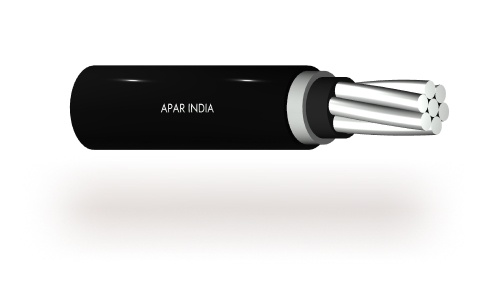EHV/MV overhead covered conductors

Covered conductors provide protection from flash overs caused by the clashing of conductors, bird/animal disturbance, fallen tree branches and debris, especially during severe weather and high pollution.
The challenges faced by utilities in installed overhead bare conductors include outages due to temporary tree obstructions, conductor clashing due to corrosion, wide Right of Way (ROW), electromagnetic field effects on electronic surveillance and safety (road /rail/river crossings/slums/congested residential areas).Covered conductors provide protection from flash overs caused by the clashing of conductors, bird/animal disturbance, fallen tree branches and debris, especially during severe weather and high pollution.Covered conductors are the cheaper alternative to underground (UG) cables and High Transmission Aerial Bunched (HTAB) cables. Covered conductors are practically maintenance free for an estimated 30+ years, and are easy to install on a network of bare conductors without changing poles, cross arms and insulators in the same span. They provide the assurance of 24×7 power.
| Application | MVCCs are an ideal and safe solution for power lines through forests, dense vegetation, wildlife sanctuaries, rivers, lakes, railway and road crossings, slums, congested residential areas, industrial and polluted areas. |
|---|---|
| Characteristics | APAR’s covered conductors are designed as per EN50397-1. They consist of longitudinally water-tight conductors with a triple extruded semiconducting layer, inner pure XLPE layer, and an outer XLPE layer that is UV and track-resistant. |
| Applicable standards | SS EN 50397-1: 2006 , BS EN 50182, IS 398-2, IS 398-4, IEC 61089, AS/NZ |
| Product range | Single core cables from 100 mm² to 400 mm², up to 110 kV, and MV 11 kV to 33 kV. Weasel, rabbit, raccoon, dog, wolf, coyote, panther, zebra sizes of conductor in AAAC, ACSR, ACSS. |
| Advantages | With APAR’s covered conductors, interruptions on transient faults are rare: for instance, falling tree branches, creepers. Typically, these constitute a majority of faults in overhead distribution lines. As a result there are fewer power shut downs. (The branches and trees can always be cut or moved away).Moreover, there are no faults caused by clashing of phase conductors during winds and storms, and reduced tower-related costs due to reduced phase-to-phase conductor distance. |
Published On: January 20, 2021